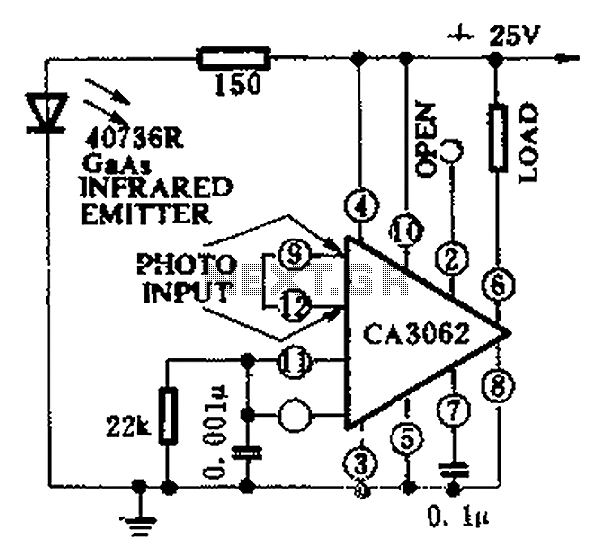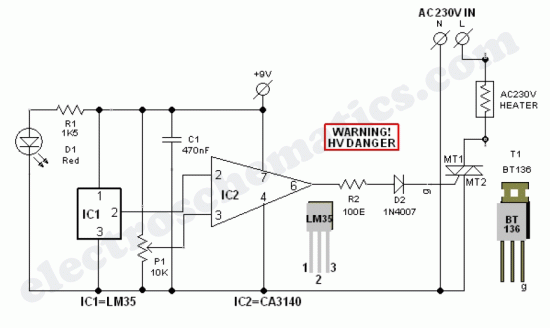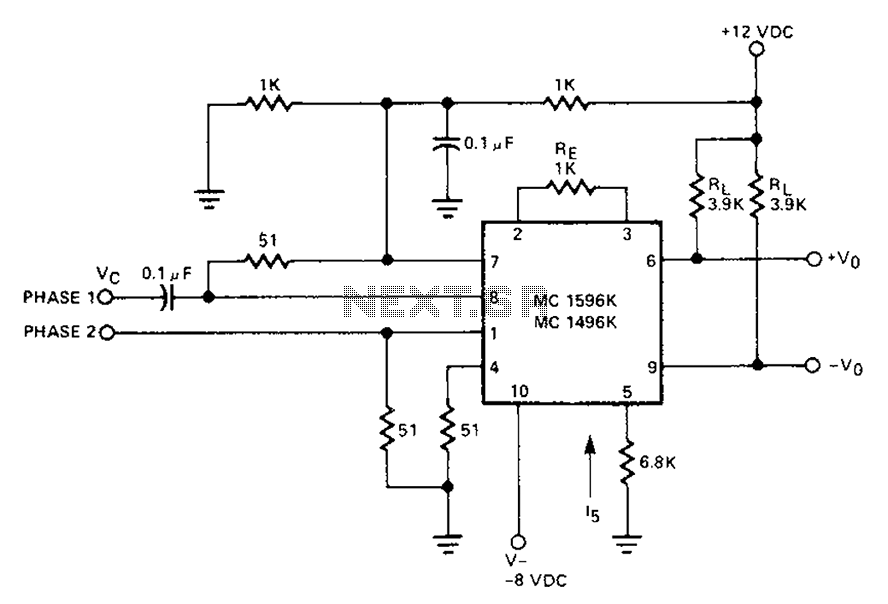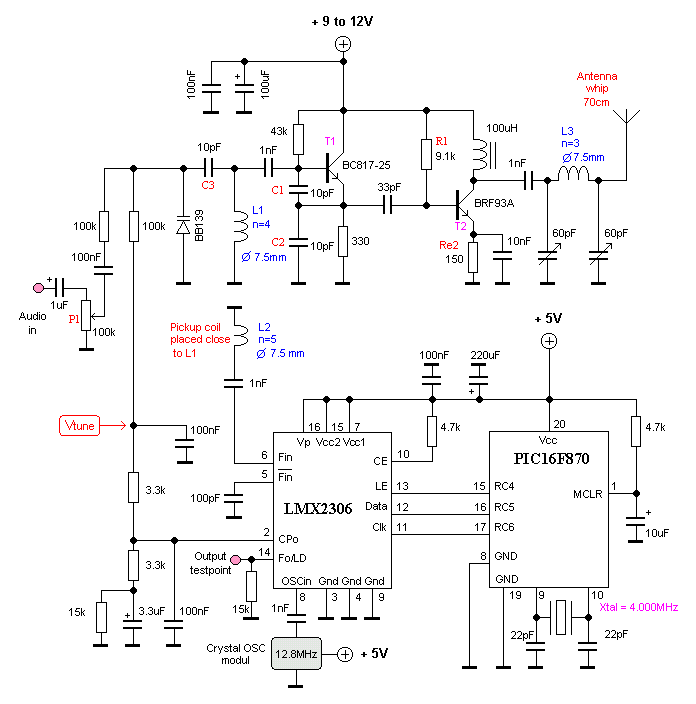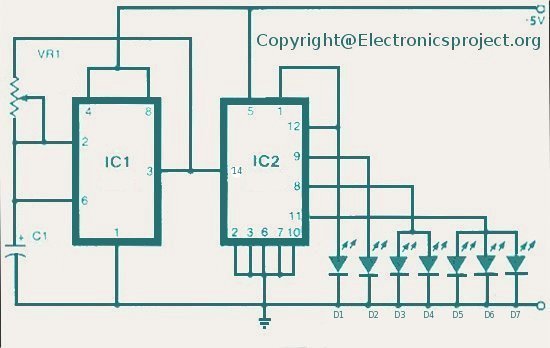
MM36SB020 two-wire wiring diagram
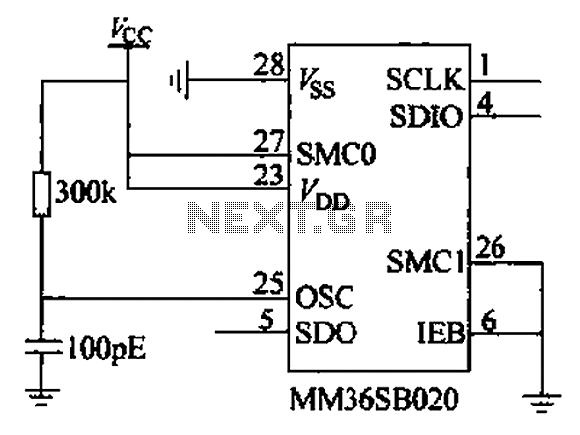
The chip power later, when the strobe IEB is held low, allows for the transfer of memory to the instruction, address, and read or write data. All operations regarding order, address, and data transfer initiate from the least significant bit (LSB). There are two special operations: RMEC and WEBC. RMEC continuously reads data from memory and must be executed after the RME instruction; the RMEC instruction does not require an address, as the address is automatically incremented by RME. The WEBC instruction also needs to follow the execution of the WEB instruction. When the device is connected to the MM36SB020 controller, it operates in a 2-wire serial bus line mode, with software utilizing query/control. Its circuit is depicted in Figure 27-55. The wing door systems operate without requiring a card key or password for door operation, utilizing a keyboard module. To meet the interface requirements for system design, the common array keyboard typically consumes a significant number of I/O resources, prompting the selection of the HD7279A keyboard display smart chip to reduce the number of I/O ports used.
The described electronic circuit is designed for a memory interface that enables efficient data transfer and control through specific instructions. The chip operates by holding the strobe input (IEB) low, which allows for the execution of commands pertaining to data management. The use of the least significant bit (LSB) as the starting point for data transfer ensures a systematic approach to handling binary data.
The RMEC (Read Memory Continuously) and WEBC (Write Enable Byte Command) instructions are crucial for the memory operations. RMEC allows for continuous reading from memory without the need to manually specify an address, as the instruction automatically increments the address after each read cycle. This feature is particularly beneficial for applications requiring rapid data access, as it minimizes the overhead associated with address management.
The WEBC instruction, which follows the WEB (Write Enable Byte) instruction, facilitates writing operations to the memory. The requirement for sequential execution ensures that data integrity is maintained during write operations.
Integration with the MM36SB020 controller via a 2-wire serial bus enhances the system's flexibility and allows for streamlined communication between the controller and memory components. The use of query/control software further simplifies the interaction, enabling efficient data management and system monitoring.
For user interaction, the system employs a keyboard module that eliminates the need for a physical card key or password for door operations. This design choice enhances user convenience while maintaining security. The HD7279A smart chip is utilized to optimize the keyboard interface, reducing the demand for I/O resources. This is a critical consideration in embedded system design, where I/O port availability can be limited. The selection of a smart chip allows for more compact and efficient designs, accommodating additional functionalities without compromising performance.
Overall, this circuit design illustrates a sophisticated approach to memory management and user interface integration, emphasizing efficiency, ease of use, and resource optimization. Chip power later, when the strobe IEB held low, the memory can be transferred to the instruction, address, write or read data. All means order, address, data transfer is starte d from the lower (LSB). There are two special means order; RMEC and WEBC. RMEC is continuously read data from memory, it is necessary to be executed after the instruction RME, people lose RMEC instruction. Not enter an address, the address is automatically incremented RME; WEBC instruction, too, must be in WEB instruction execution after execution.
When the device is connected to the controller MM36SB020, 2-wire serial bus line mode, the software uses the query/control. Its circle in Figure 27-55 hardwired shown. Wing door systems are in the process of running the buttocks, the cell user: 4) keyboard module without the need to carry a card key people Guangdong card and password to open the door operation, invite you to set multiple keys keyboard interface requirements for system design, Common array keyboard occupies a large number of I/O resources, in order to reduce the number of I/O ports, the design chosen HD7279A keyboard display smart chip.
The described electronic circuit is designed for a memory interface that enables efficient data transfer and control through specific instructions. The chip operates by holding the strobe input (IEB) low, which allows for the execution of commands pertaining to data management. The use of the least significant bit (LSB) as the starting point for data transfer ensures a systematic approach to handling binary data.
The RMEC (Read Memory Continuously) and WEBC (Write Enable Byte Command) instructions are crucial for the memory operations. RMEC allows for continuous reading from memory without the need to manually specify an address, as the instruction automatically increments the address after each read cycle. This feature is particularly beneficial for applications requiring rapid data access, as it minimizes the overhead associated with address management.
The WEBC instruction, which follows the WEB (Write Enable Byte) instruction, facilitates writing operations to the memory. The requirement for sequential execution ensures that data integrity is maintained during write operations.
Integration with the MM36SB020 controller via a 2-wire serial bus enhances the system's flexibility and allows for streamlined communication between the controller and memory components. The use of query/control software further simplifies the interaction, enabling efficient data management and system monitoring.
For user interaction, the system employs a keyboard module that eliminates the need for a physical card key or password for door operations. This design choice enhances user convenience while maintaining security. The HD7279A smart chip is utilized to optimize the keyboard interface, reducing the demand for I/O resources. This is a critical consideration in embedded system design, where I/O port availability can be limited. The selection of a smart chip allows for more compact and efficient designs, accommodating additional functionalities without compromising performance.
Overall, this circuit design illustrates a sophisticated approach to memory management and user interface integration, emphasizing efficiency, ease of use, and resource optimization. Chip power later, when the strobe IEB held low, the memory can be transferred to the instruction, address, write or read data. All means order, address, data transfer is starte d from the lower (LSB). There are two special means order; RMEC and WEBC. RMEC is continuously read data from memory, it is necessary to be executed after the instruction RME, people lose RMEC instruction. Not enter an address, the address is automatically incremented RME; WEBC instruction, too, must be in WEB instruction execution after execution.
When the device is connected to the controller MM36SB020, 2-wire serial bus line mode, the software uses the query/control. Its circle in Figure 27-55 hardwired shown. Wing door systems are in the process of running the buttocks, the cell user: 4) keyboard module without the need to carry a card key people Guangdong card and password to open the door operation, invite you to set multiple keys keyboard interface requirements for system design, Common array keyboard occupies a large number of I/O resources, in order to reduce the number of I/O ports, the design chosen HD7279A keyboard display smart chip.
